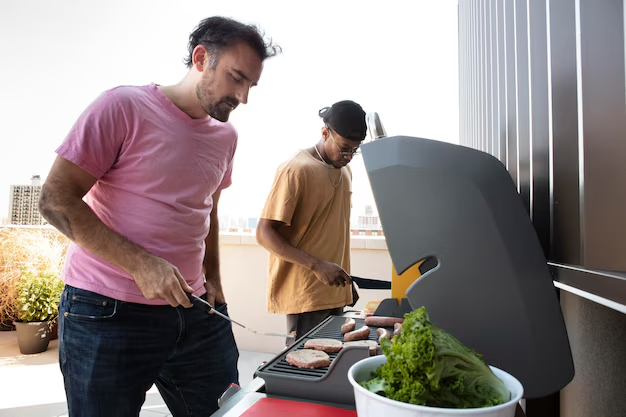How Long Should You Wait Before Standing Your Refrigerator Upright? Expert Tips & Guidelines
Moving a refrigerator is no small feat, and if you've ever found yourself in the position of having to lay one on its side, you're likely familiar with the uncertainty that follows. How long should you wait before turning it back on? Is there a risk of damage? Let’s dive into these questions with a comprehensive look at how to handle your refrigerator after it's been laid down.
Why Does It Matter If a Refrigerator Is Laid Down?
Refrigerators are designed to be transported upright. This orientation helps maintain the proper function of its internal components, primarily the compressor and the cooling system. When a refrigerator is laid down, the oil within the compressor can move into the refrigerant lines, which can affect the cooling efficiency and potentially lead to damage if the unit is powered on too soon.
Key Considerations:
- Compressor Oil Displacement: The immediate concern is the movement of the compressor oil. In its upright position, the oil remains in the compressor, but when laid down, it can flow into the cooling lines.
- Mechanical Stability: Components within a refrigerator are often delicately balanced and secured in an upright position. Shifting the orientation could cause parts to move slightly, possibly affecting their performance.
How Long Should You Wait Before Reassessing?
Once the refrigerator has been laid down, it's crucial to wait before plugging it back in. As a general guideline, it’s recommended to wait at least 4 hours, but ideally around 24 hours to ensure that the oil has fully settled back into the compressor.
Practical Steps:
- Initial Positioning: Immediately return the refrigerator to its upright position once it's at its final destination.
- Time Factor: The longer the fridge was laid down, the longer you should wait before restarting it.
- Consult Your Manual: Refer to the manufacturer’s instructions as time recommendations may vary among different models.
Understanding the Risks of Premature Activation
Activating a refrigerator too soon after it has been laid on its side can have potential risks. Here’s why giving it time is essential:
- Compressor Damage: If the refrigerator is turned on while oil is still in the refrigerant lines, it can cause stress on the compressor, leading to expensive repairs or even replacement.
- Reduced Efficiency: A refrigerator might cool inefficiently if the compressor is compromised, affecting your food storage and increasing energy consumption.
Best Practices for Transporting a Refrigerator
Transporting a refrigerator while minimizing the need to lay it down can save a lot of hassle. Here are some best practices:
- Keep It Upright: Always try to transport your refrigerator upright. This ensures that oil stays in the compressor where it belongs.
- Use Proper Equipment: Dollies, sturdy moving belts, and padding are your best allies when moving a refrigerator upright.
- Plan Your Route: Ensure that your path is clear of obstacles and that there is enough space to navigate the fridge in its upright position through doorways.
💡 Quick Tip Box
- Rotate Properly: If you must lay the refrigerator down, make sure it's laid on the side recommended by the manufacturer—often the side opposite the compressor piping.
- Teamwork: Always move a fridge with assistance to avoid dropping or tilting it excessively.
Exploring Other Relevant Topics
Understanding the care of your refrigerator extends beyond moving it. Here are related topics that can also benefit your fridge maintenance and food safety:
Optimal Refrigerator Storage Tips
- Temperature Settings: Maintain a temperature of around 37°F (3°C) to ensure food safety and preserve freshness.
- Organized Contents: Avoid overloading the fridge. Allow air to circulate freely for consistent cooling.
- Routine Checks: Regularly inspect door seals for leaks that can affect cooling efficiency.
Maintenance Tips for Longevity
- Regular Cleaning: Clean coils and interior spaces to improve efficiency and hygiene.
- Seal Inspections: Check door seals periodically to ensure they’re airtight to prevent cool air leakage.
- Level Adjustment: Keep the refrigerator level to prevent strain on the compressor.
How to Handle Common Refrigerator Issues
- Strange Noises: These might indicate issues with the compressor or fan. Investigate the source and consult a professional if needed.
- Inconsistent Temperatures: Could be due to faulty thermostats or blocked vents. Ensure the vents are clear and functioning correctly.
FAQs: Commonly Asked Questions
How long can a refrigerator be laid down during transport?
While brief periods might be necessary, it should be minimized to protect the unit. Ideally, it should not exceed a few hours.
What side of the refrigerator should never be laid down?
Avoid laying it on the front or back. Instead, opt for the side specified by the manufacturer to prevent oil from entering the cooling lines.
Is it necessary to unplug the refrigerator before moving it?
Yes, always unplug it to ensure safety and prevent electrical hazards during the move.
Strategic Summary of Key Takeaways 📝
Here’s a quick summary to help you remember the essentials when dealing with a refrigerator that’s been laid down:
- Wait Time: ⏳ Wait at least 4-24 hours before turning it on.
- Transportation: 🚚 Keep the refrigerator upright whenever possible.
- Reset Components: 🔄 Ensure all internal components are settled before activation.
- Consultation: 📖 Refer to the refrigerator manual for model-specific guidance.
By understanding and following these guidelines, you can ensure that your refrigerator remains in optimal working condition and continues to provide safe and efficient storage for your food items. This knowledge not only protects your appliance but also extends its life, safeguarding your investment for years to come.
